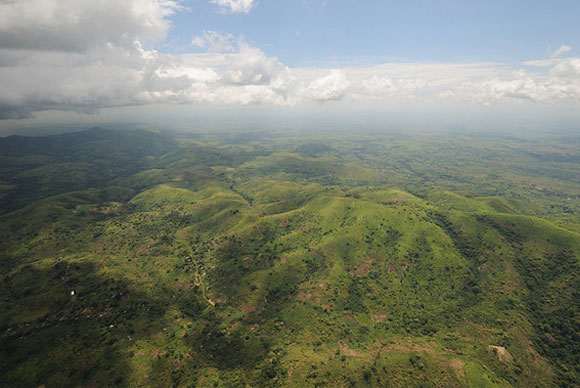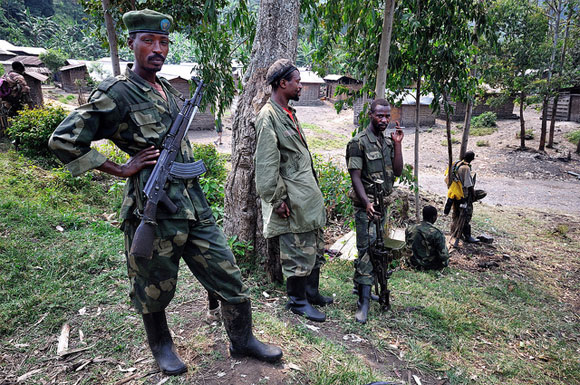 Mountains in east DRC. Photo by Julien Harneis, uploaded under a Creative Commons licence.
Mountains in east DRC. Photo by Julien Harneis, uploaded under a Creative Commons licence.Rape within war and conflict is far from new. But although the victims of rape are predominantly female, increasing evidence illustrates that men also fall victim to rape. For example, research undertaken by Sandesh Sivakumaran shows that sexual violence against men has been documented in the conflicts in Northern Ireland, Sri Lanka, Iraq, Burundi, Uganda and the Democratic Republic of Congo (DRC), to mention only a few. However, in comparison to female victims of rape, male victims of rape rarely come forward. Have strong ideas of masculinity created a permanent separation between men as perpetrators and women as victims? Is it more “acceptable” for women to fall victim to rape than their male counterparts?
Male/male rape in Burundi and the Democratic Republic of Congo (DRC)
The number of male/male rape victims
Seeing as reporting and research of the problem of male/male rape is insufficient, levels of awareness are subsequently low; one member of staff at the UN Stabilisation Mission in DRC recently claimed to have never heard of male/male rape. This is despite the fact that an aid worker at Panzi Hospital in Bukavu, DRC, has said that wherever they go, they hear about men getting raped, and the Refugee Law Project (RLP), lament that their staff are overwhelmed by cases of male/male rape. These cases are only the tip of the iceberg, for most male/male rape victims never come forward.
Internal and social stigmatisation
Because of this, many victims of male/male rape are accused of “having wanted it”. Being unable to prove rape, victims also run the risk of being seen as homosexual. Sivakumaran draws an interesting parallel to similar issues facing women within certain societies, for if a woman has difficulty proving rape it may be assumed she has given consent, which might lead to accusations of adultery. In addition, many male victims of rape are confused because of their natural physiological reactions during a rape, which can include ejaculation. This causes further confusion within the victim, leading to internal stigmatisation. Due to the lack of available support mechanisms available to victims of male/male rape, reassuring explanations about sexual orientation and natural physiological reactions never reach male victims of rape, even if they do seek help. This internal and social stigmatisation also prevents victims of male/male rape from seeking medical assistance, and anecdotal evidence suggests that many male victims commit suicide.
Unfortunately, when prominent individuals agree with anti-homosexual sentiments, this does nothing to help such men. Nobel Peace Prize winner and President of Liberia, Ellen Johnson Sirleaf, defended laws that criminalise homosexual acts, and Jewel Howard Taylor, the ex-wife of Charles Taylor and Liberian politician, called homosexuality “a criminal offence” and “un-African”. It therefore becomes even more difficult to de-stigmatise male/male rape and attempt breaking the silence of male victims.
 Troops of the M23, one of the militia groups implicated in wide-spread abuses in eastern DRC. Photo from Al Jazeera, uploaded under a Creative Commons licence.
Troops of the M23, one of the militia groups implicated in wide-spread abuses in eastern DRC. Photo from Al Jazeera, uploaded under a Creative Commons licence.Available support for male victims of rape
There is tragically little support for male victims of rape in DRC and Burundi, due to a number of factors. Evidence suggests that for clinics that treat rape victims, reputation is a large factor in creating an awareness which encourages victims to seek help. While the efforts of organisations such as Médecins Sans Frontières (MSF) are commendable in regards to helping female victims, few efforts are taken to target victims of male/male rape. Unfortunately, many doctors in both Burundi and the DRC do not believe in the existence of widespread male/male rape, therefore making it impossible to provide care for male/male rape victims.
This lack of attention to issues of male rape can also be seen as the result of a strong gendered division. In the past, there have been incidents where male rape victims have been refused medical attention. For example, one male rape victim was turned away by the UNHCR, with the reasoning that they have programmess for vulnerable women, but not men.
The Refugee Law Project is the leading civil society organisation providing help to male Congolese victims, though is actually based in Kampala, Uganda. The Panzi Hospital / Foundation in Bukavu also supports male victims, but demand still far outstrips the supply of support and there are few other civil society organisations directly targeting male victims. This situation is at least in part due to the fact that few funders directly target male victims of rape; indeed, groups like the RLP have fallen foul in the past of funders whose guidelines require that the beneficiaries of funds are female.
Victims of male/male rape also face obstacles in the criminal justice system. Firstly, there is the general inability of police officers in the DRC to deal with this sensitive subject, for they are often understaffed, underfunded and lack knowledge of the SGBV legal framework. Unfortunately, due to Burundi legislation, no comparison of the Burundian police can be offered.
Secondly, the legal rulings on homosexuality in both countries impact upon whether or not a male victim of rape feels able to report it. In Burundi, Article 567 of the new Penal Code states: ‘Whoever has sexual relations with a person of the same sex is punished by a prison sentence of 3 months to 2 years and a fine of 50,000 to 100,000 francs, or one of these penalties.’ The introduction of Article 567 meant that homosexuality was criminalised for the very first time in Burundi’s history.
In the DRC however, although the law on sexual violence includes male victims in its definition of rape, a crime punishable with a minimum of five years imprisonment, the reality is very different. This is because the judicial system itself is flawed and successful prosecutions of perpetrators are extremely uncommon. A male army officer has been sentenced to 14 years in prison for the rape of a Congolese male, but this was very much the exception rather than the rule for perpetrators.
Conclusion
In order to break the silence of male/male rape victims, there needs to be an understanding that men are not solely perpetrators, but can be victims of SGBV. Further research is needed on this delicate topic in order to bring about discussion and understanding of a topic that is burdened with stigma. Only once this happens can we start the complex process of de-stigmatising and providing aid for victims of male/male rape.
Further information
A note on terms: Male/Male Rape and SGBV
Throughout this article I refer to rape, where both the perpetrator and the victim are males, as male/male rape. This terminology is borrowed from Sivakumaran and avoids having any additional meanings and implications attached to it, such as the previous use of “homosexual rape.” However, this does not mean that male/male rape is excluded from the topic of SGBV, despite some authors incorrectly arguing that men are not raped because they are men. Men are raped precisely because they are men, because rape is one of the most damaging and effective strategies of war. Male/Male rape becomes even more effective because it exploits ideas of masculinity, especially in patriarchal societies where masculinities are synonymous with strength and power. While masculinity is most commonly shown in contrast to femininity, it is important to acknowledge that it can also be demonstrated in contrast to other masculinities. Because male/male rape is an aggressive and not a sexual act, the victim is emasculated while simultaneously ‘masculinising’ the perpetrator. Lynne Segal argues that ‘a male who fucks another male is a double male.’ As a result, therefore, victims of male/male rape can feel weakened and powerless, and as if they bear a great stigma.
'They slept with me' by the Refugee Law Project
http://www.youtube.com/watch?v=6dxaFqezrXg










